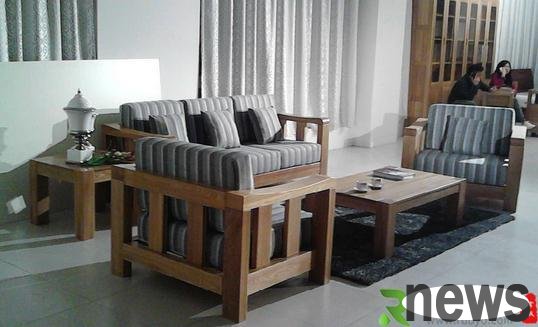Skills for purchasing elm furniture - Cleaning elm furniture Skills for purchasing elm furniture 1. Observe the texture of elm furniture. Elm wood has a tough texture, simple and natural texture, and does not require a single iron nail, because elm...

Skills for purchasing elm furniture - Cleaning elm furniture
Skills for purchasing elm furniture
1. Observe the texture of elm furniture. Elm wood has a tough texture, simple and natural texture, and does not require a single iron nail, because elm wood is connected by mortise and tenon, which can be preserved for a long time and is very popular among people.
2. Good elm furniture is divided into orderly, not false, not boastful, not overestimate etiquette, and round in square, natural and appropriate, upright and beautiful, combining hard and soft, and showing exquisiteness in refining.
3. Observe the texture of elm furniture. Good elm has clear texture, beautiful patterns, strong toughness, and smooth planing. It can be harmoniously matched with furniture of different materials, which can bring infinite vitality to the living space and a more natural pastoral atmosphere.
4. The elm center and sapwood are clearly distinguished, the material is light and hard, the mechanical strength is high, the texture is straight, and the structure is thick. Heartwood, dark purple and gray; sapwood is narrow, dark yellow, elegant and generous, complex and simple in shape, and very pleasing to the eye.
Cleaning and maintenance of elm furniture
1. Pay attention to the temperature and humidity of elm furniture.
Compared with hardwood furniture, elm furniture has a lower density, so the dry shrinkage and wet increase is even greater. In addition, most of the current elm furniture is not painted, but only has a hot wax. Therefore, elm furniture is relatively more prone to deformation, and the indoor temperature is required to keep it at 20— 30℃, and the humidity is maintained at 40— 50%. Try not to place it in overcast or dry places, such as stoves, radiators, basements, etc., to avoid mold or cracking. If you live in a bungalow with a lower terrain, try to raise the legs and feet of the furniture as much as possible, otherwise your legs will be easily corroded by moisture. If possible, try to nail glue pads on the feet of the furniture, or small pieces of wood.
2. Elm furniture should be moved and placed lightly.
Elm wood contains “strike ”, so when moving or moving furniture, you should move it lightly, and do not pull it hard to avoid damaging the tenon structure. Tables and chairs cannot be lifted, and they are prone to fall off. They should be lifted from the side of the table and the chair surface. It is best to remove the cabinet door and then lift it, which can reduce the weight and avoid movement of the cabinet door. If you want to move a particularly heavy furniture, you can use a soft rope to put it under the furniture chassis and lift it before moving it.
Wipe frequently to prevent insect-damaged elm furniture, which is very popular among borers, so wipe it frequently. When wiping, try to use a clean and soft dry cloth and gently wipe it back and forth along the wood grain. Appropriate amount of solid anti-mothing agent should be placed in closed furniture such as boxes to prevent pests from being damaged. Placing peppercorns in the furniture can prevent rats from entering, and placing camphor and tobacco leaves can prevent insects and cockroaches.
3. Try to avoid load bearing.
In order to prevent furniture from deforming, try to avoid heavy items on the surface of the furniture for a long time, such as TVs, fish tanks, etc. When placing items, you should apply a layer of soft film, and move lightly when moving and placing them to avoid damage.
4. Stay away from direct sunlight.
Try not to place elm furniture in the sun, especially avoid placing it in front of large south-facing glass windows. Long-term direct sunlight will cause the furniture to fade and dry.
5. Do not place corrosive and dyeable items.
In addition, elm furniture is not only low in density, but also has strong hygroscopicity. Therefore, try not to place corrosive and dyeable chemicals on the surface of the furniture. Such as detergent, hot water cup, ink, etc. Also, it requires regular waxing for easy handling. Under normal circumstances, wax once a quarter.